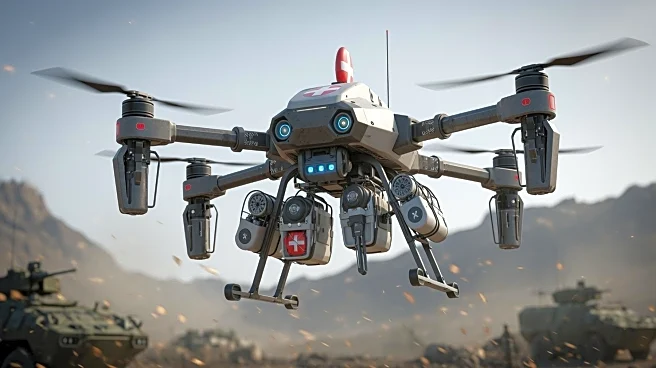What's Happening?
The Defense Advanced Research Projects Agency (DARPA) has issued a request for information (RFI) to identify cutting-edge technologies that could transform combat casualty care. The agency aims to improve survivability and reduce severe complications
from battlefield injuries, such as internal bleeding, compromised airways, brain injuries, and multi-organ shock. DARPA is interested in technologies that facilitate rapid diagnosis and intervention in challenging field conditions. The RFI highlights the potential use of digital twins for predicting casualty outcomes and seeks automated solutions for airway management, bleeding control, and hemodynamic stabilization. Technologies of interest include sensing and imaging, artificial intelligence, machine learning, robotic interventions, and real-time field monitoring biomarkers. The agency is also exploring systems integration, human-machine teaming, augmented and virtual reality training, and autonomous resuscitation. Responses to the RFI are due by December 3, although a discrepancy in the posting lists October 30 as the deadline.
Why It's Important?
This initiative by DARPA is significant as it addresses the critical need for advanced medical technologies in combat scenarios, where traditional medical resources may be limited. By focusing on rapid diagnosis and intervention, these technologies could significantly enhance the survival rates of injured soldiers and reduce the severity of battlefield injuries. The development and integration of such technologies could also have broader implications for civilian emergency medical care, potentially leading to innovations that improve outcomes in trauma care settings. Stakeholders in the defense and medical technology sectors stand to benefit from potential contracts and collaborations resulting from this RFI, fostering advancements in both military and civilian healthcare systems.
What's Next?
Following the RFI, DARPA may issue a broad agency announcement to initiate demonstration projects and technology pilots. This could lead to the development and testing of new medical technologies in real-world scenarios. The response from technology developers and medical researchers will be crucial in shaping the future of combat casualty care. Additionally, the outcomes of this initiative could influence future military medical protocols and training programs, integrating new technologies into standard practice.
















